Low-Carbon Flights Are Approaching. Will Airports Be Ready?
This article originally appeared in Ground Support Worldwide.
The future of flight is still up in the air.
Amid global efforts to decarbonize transportation, the aviation industry is embracing less carbon-intensive fuels and exploring alternative propulsion aircraft.
It’s unclear which technologies will ultimately prevail or how soon these innovative technologies will gain traction.
Despite the uncertainty, airport authorities must start laying the groundwork, designing infrastructure systems critical for airlines to achieve their low-carbon aspirations.
Increasing Carbon Emissions, Mounting Urgency
The airline industry has agreed to reach net-zero carbon emissions by 2050. Lowering emissions will become increasingly urgent as the industry’s carbon footprint continues to grow. Air travel and transport are estimated to account for 3.5 percent of human-caused carbon emissions today, climbing to roughly 25 percent by midcentury if left unchecked.
Achieving net-zero emissions will require a mix of solutions with many still in prototype or demonstration phases. Possibilities include:
- Sustainable aviation fuel (SAF) from biofuel
- Electrified fuel (e-fuel) made with hydrogen-powered synthetic fuel — known as power-to-liquids (PtL)
- Battery-electric aircraft
- Hydrogen fuel cell aircraft
Each airline’s decarbonization pathway will depend on their preferred choice of aircraft, travel distances, and cargo weight. The speed of adoption is uncertain. While pilot projects are underway, implementation will depend on continued technical advancements and improvements in the technology’s underlining economics.
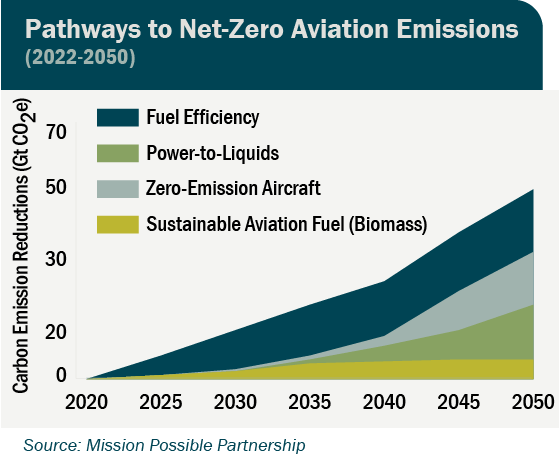
Sustainable Aviation Fuel
Blending in SAF lowers the carbon intensity of jet fuel. SAF can be produced from renewable biomass or waste resources such as corn grain, oil seeds, algae, and forestry residues.
Notably, SAF does not require significant modification to aircraft engines or fuel distribution systems. SAF blends can be mixed with jet fuel supplies before delivery at airport fuel farms. Upon reaching the airport, minimal infrastructure changes are needed — if any.
Currently, SAF feasibility is constrained by limited supplies and higher feedstock costs. The U.S. Department of Energy theorizes biomass production could reach 1 billion dry tons per year. To scale up SAF production (currently only 0.5 percent of jet fuel demand), the U.S. federal government’s Sustainable Aviation Fuel Grand Challenge is dedicating $4.3 billion toward research, development, demonstration, and deployment programs.
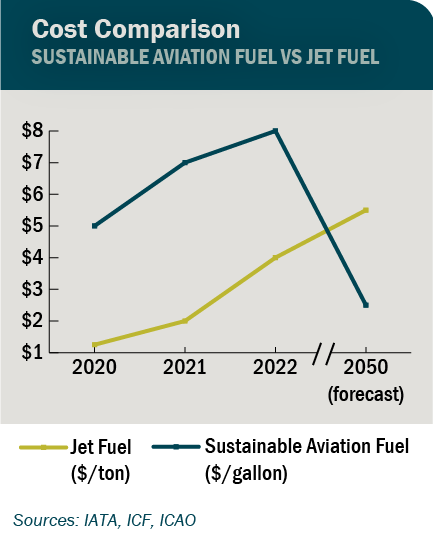
SAF comes with sustainability concerns. At best, SAF reduces but does not eliminate greenhouse gases — in November, an SAF-powered transatlantic flight released 70 percent fewer carbon emissions than a comparable flight. If SAF is made from corn ethanol or vegetable oils, however, SAF may increase net emissions due to the use of emission-intensive farming methods and changes in land use. Diverting farmland and feedstock to SAF production may also create the unintended consequence of driving up global food prices.
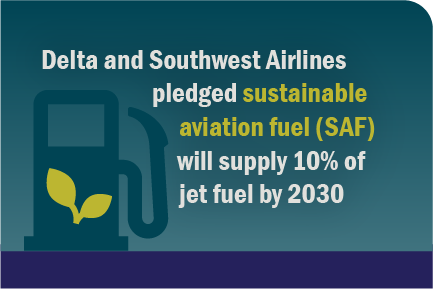
Power to Liquid (PtL) and e-Fuels
Synthetic hydrocarbons may provide a more cost-effective and sustainable version of SAF.
PtL production methods include converting hydrogen and carbon feedstocks into a fuel equivalent to kerosene. Other proposals use combinations of renewable-powered electric heat and a catalytic cell or carbon dioxide to create an “e-fuel.” PtL efficiency is expected to improve over time as hydrogen costs decline.
Among SAF options, several industry experts see PtL as providing the most potential for reaching scale and widespread adoption. The Mission Possible Partnership, a consortium of industrial, financial and environmental leaders, envisions PtL will eventually contribute 25 percent of aviation’s decarbonization targets.
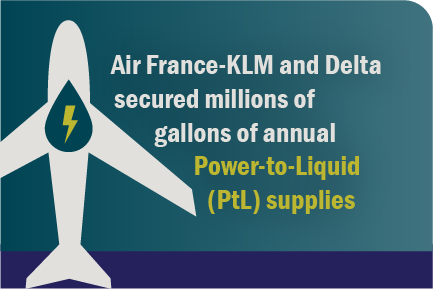
Electric Aircraft
Battery-powered electric aircraft are unlikely to operate on current flight routes due to range concerns. Roughly 100 electric aircraft are currently under development, attempting to find a balance between increasing battery capacity while not exceeding aircraft weight limits. Federal requirements add further complications — aircraft must be able to travel their planned distances as well as have extra capacity in case of an emergency event.
Electric aircraft may eventually be cost effective for trips between 100-200 miles. Rather than replace existing routes, shorter-distance flights may potentially open new regions to air travel. Market adoption depends on battery costs falling, aircraft technology improving, and greater standardization of charging infrastructure.
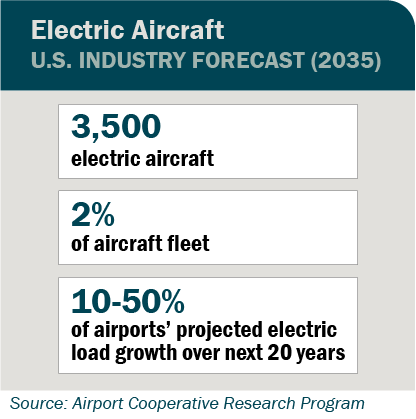
If electric aircraft eventually operate at the airport, authorities will need to dramatically expand power supplies to fulfill charging demands. Grid supplies are limited. Authorities will need to install distributed energy resources such as solar photovoltaics (PV), battery energy storage systems, and fuel cells. Microgrids will likely become operational necessities.
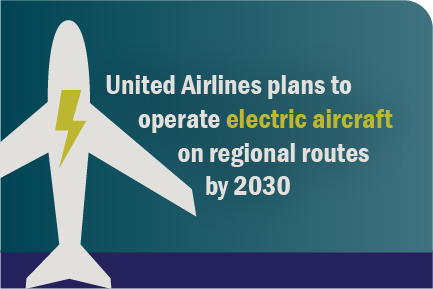
Hydrogen-Powered Aircraft
Unlike battery-electric aircraft, hydrogen-powered planes could potentially operate on current routes. Initial concepts range from 9-seat aircraft capable of a 300-mile flight to 200-seat planes that could travel 2,000 miles or more. On average, airlines travel less than 1,000 miles per trip for passenger flights and 1,500 miles when transporting cargo.
Prototypes are currently under development by Airbus as well as startups ZeroAvia and Universal Hydrogen. These run on fuel-cell-driven motors or adapted engines powered by hydrogen combustion.
Hydrogen can be a zero-emission fuel when produced using renewable energy. Hydrogen requires huge amounts of energy, however, for splitting water into hydrogen and oxygen and for liquifying and storing the fuel.
Third party suppliers will be needed to deliver fuel and infrastructure to store, mix and distribute the fuel. Operations would require hydrogen storage tanks, compression and precooling equipment, and dispensers.
In the event of a combustion event, fire safety requirements likely require airlines taxi hydrogen-powered aircraft farther from the terminal. Such requirements could make hydrogen aircraft cost prohibitive. Airports would need to extend jet bridges or make significant changes to apron logistics.
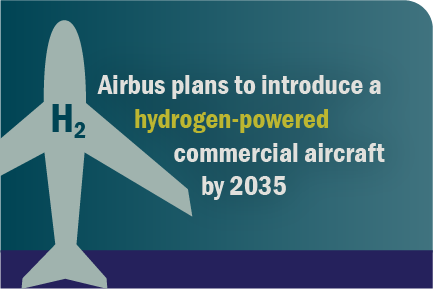
Infrastructure Planning for Carbon Neutral Flights
Airlines may eventually coalesce around a preferred decarbonization strategy. Alternatively, airports may need to accommodate an all-the-above approach, providing fueling supplies and charging infrastructure to satisfy SAF, electric, and hydrogen solutions.
While such uncertainty can seem daunting, a comprehensive planning approach empowers airport authorities with the information necessary to properly review stakeholders’ decarbonization strategies.
Authorities can get started by developing a clear understanding of existing infrastructure systems. Power capacity studies and infrastructure condition assessments provide a baseline for facility leaders to plan how to best accommodate airlines’ shifting requirements.
Proactive infrastructure planning will go a long way to ensure airlines have ample supplies of power and fuel supplies, contain authorities’ capital costs, and support the industry’s path to decarbonization.


